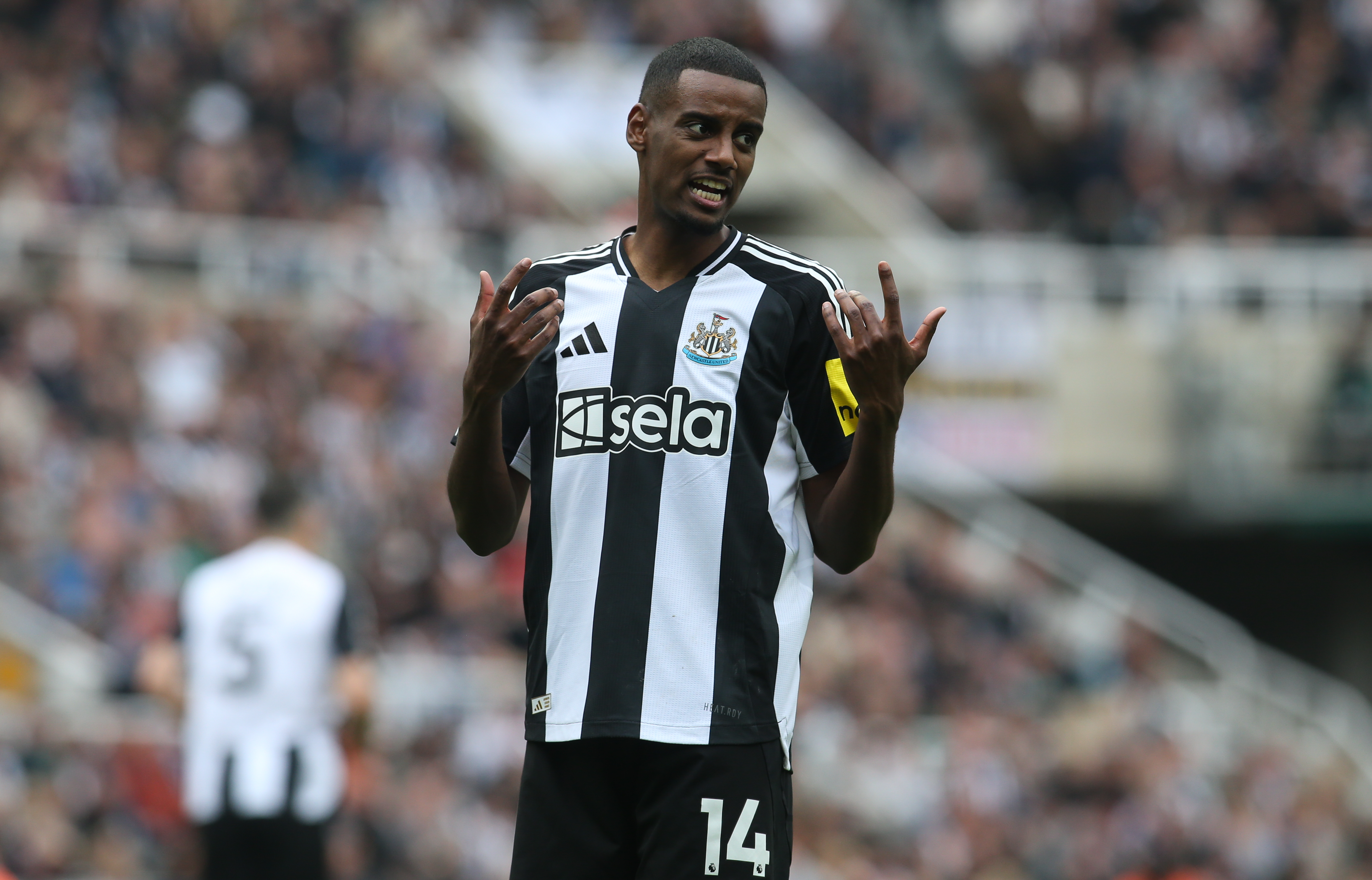Cazorla might be playing second fiddle to Ozil, but he's doing it brilliantly
Arsenal's Spanish playmaker has been pushed deeper, but he's excelling in the role and allowing others to flourish too, writes Michael Cox...

Arsene Wenger has always loved playmakers, and often attempted to cram as many as possible into one side.
Sometimes this works excellently, sometimes it’s a disaster. When Arsenal were at their predictable worst a few seasons ago, this meant three similar players deployed on the left, right and through the middle, making the Gunners frustratingly narrow and one-dimensional.
Recently, Wenger has started to field speedier players out wide. Theo Walcott, Gervinho, Alexis Sanchez and Danny Welbeck have all started there in recent years, and all are more forwards than playmakers. Compared to the likes of Tomas Rosicky, Samir Nasri and Alex Hleb, it’s a very different picture.
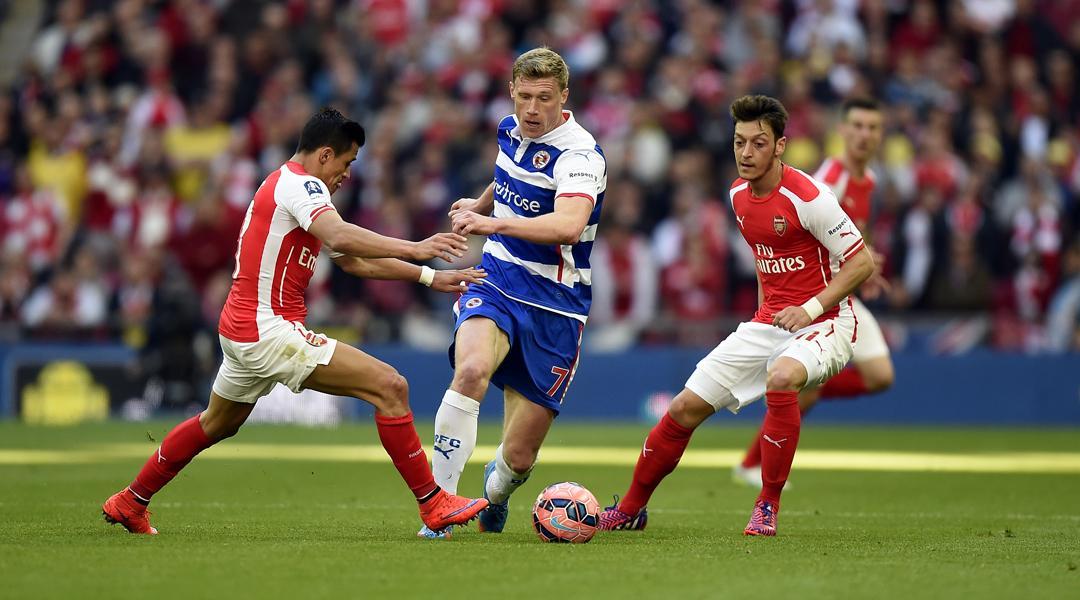
Get back
But Wenger continues to want playmakers in his starting XI, and therefore he’s often shifted them back into deeper roles. This, in truth, is an innovation that came relatively late in Wenger’s spell at Arsenal. Wenger often accommodated midfielders or attackers in defence (Lauren, Ashley Cole, Kolo Toure), but in the first half of his Arsenal reign he liked more combative players in the centre of the pitch, like Patrick Vieira, Emmanuel Petit and Gilberto Silva.
Now, he moves playmakers back. This happened with Denilson, initially a ball-playing midfielder but shifted into a defensive midfield role after Mathieu Flamini’s departure in 2007; then Mikel Arteta following Alex Song’s move to Barcelona.
The latest case is slightly different – Santi Cazorla has switched from being a standard playmaker to a more deep-lying midfielder, and has made the transition expertly.
Get FourFourTwo Newsletter
The best features, fun and footballing quizzes, straight to your inbox every week.
Cazorla is a naturally versatile footballer. In his best seasons at Villarreal, the side’s fluid system allowed him great positional freedom – he started from either the left or the right, but drifted laterally into space between the lines. In common with many other Spanish playmakers like David Silva, Juan Mata or Isco, Cazorla could play any of the three attacking roles in the 4-2-3-1 system which became the default across La Liga.
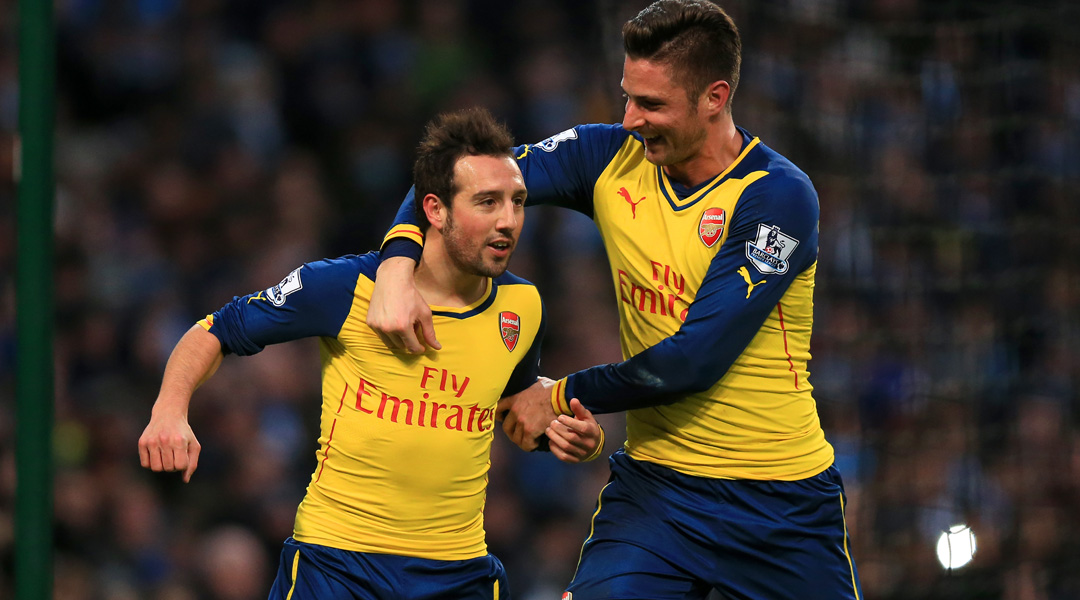
But Cazorla had rarely been used in a deeper role. He was the connection between midfield and attack, and depended upon others to provide him with service in the final third. Now he’s playing deeper, more withdrawn, and starting attacks rather than playing the killer ball.
A hugely intelligent footballer renowned for his ability with either foot, it’s nevertheless been surprising how effective the Spaniard has been here. Not only has he managed to control games, effectively providing the solid, consistent passing quality lacking throughout Arteta’s extended absence from the side, but he’s also proved capable of getting stuck in and scrapping in front of the back four. Cazorla is a cultured playmaker, but he has a feisty edge too.
Etihad excellence
Cazorla’s performance in Arsenal’s 2-0 victory away at Manchester City in January was one of the best all-round midfield displays of the Premier League season. It featured everything you could reasonably expect from a midfielder – Arsenal's No.19 opened the scoring from the spot, assisted the second for Olivier Giroud, and then controlled the game as Arsenal slowed the tempo.
His passing was accurate, and his dribbles in deep positions were perfect for an Arsenal side playing an unusual counter-attacking game.
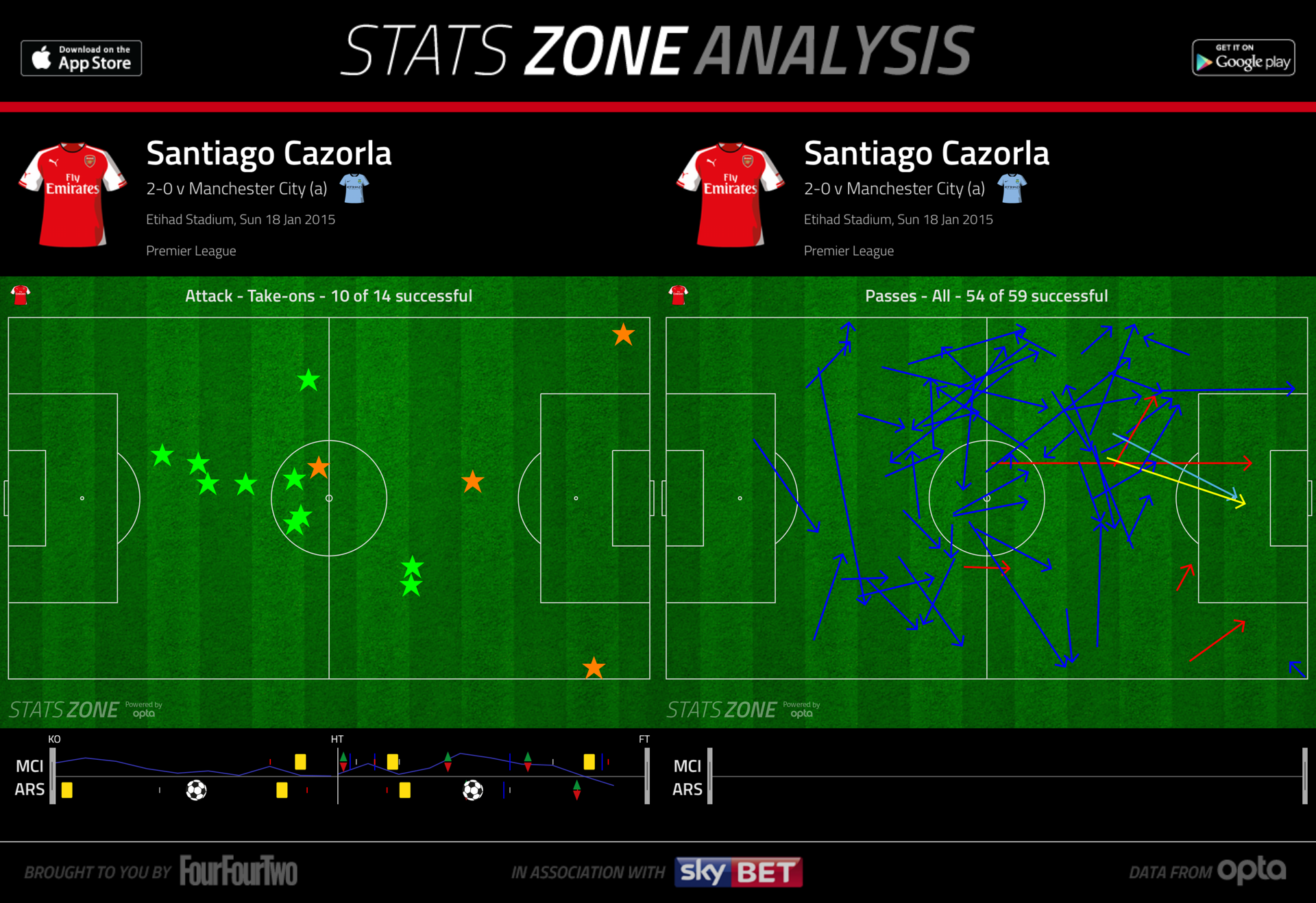
But that defensive ability was equally important – his tackles weren’t always successful high up the pitch, but he broke up play consistently and was more successful with deeper defensive interventions.
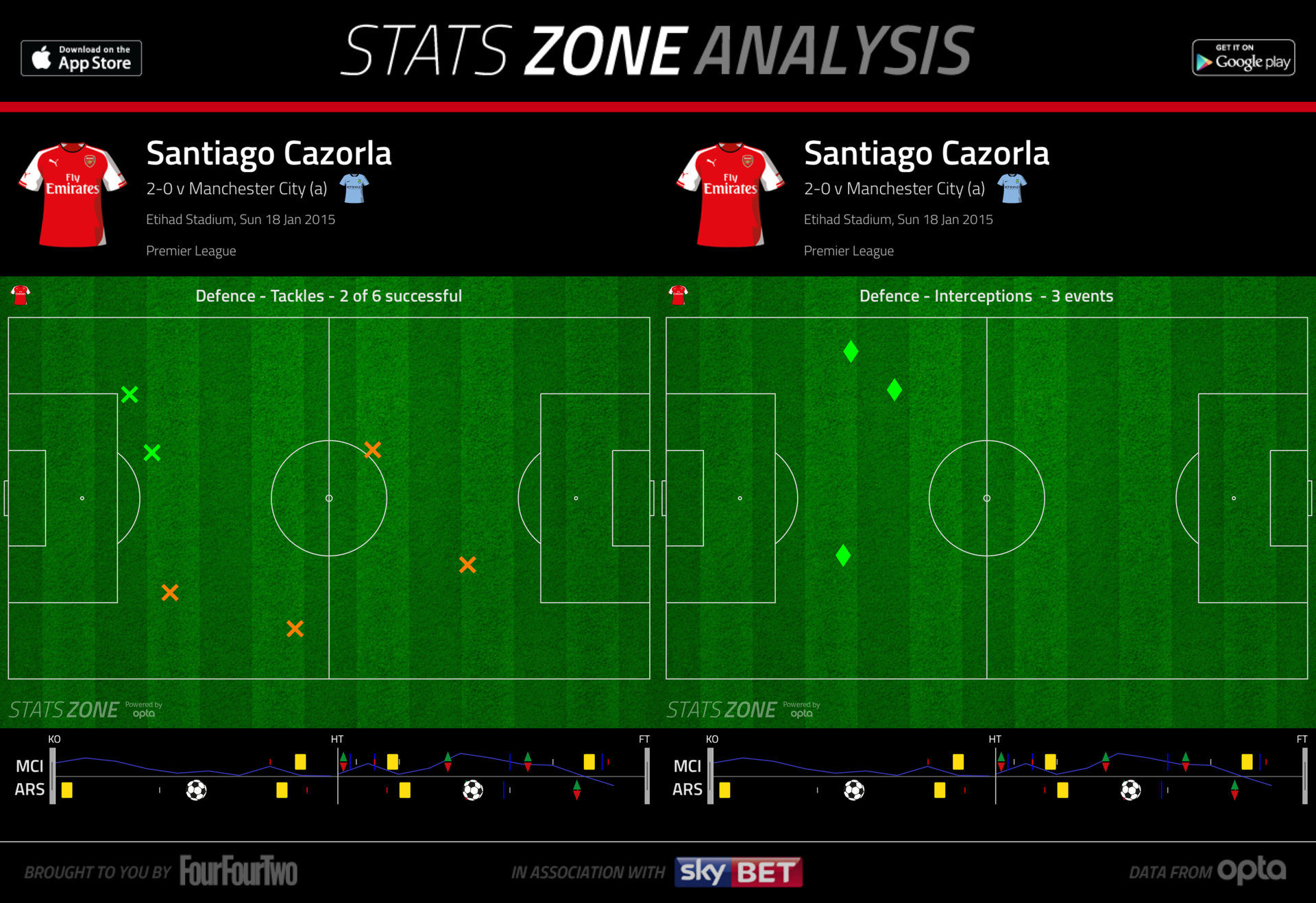
A subsequent display in a 2-0 home victory over Everton was also interesting. Cazorla was fielded even deeper, alongside Francis Coquelin in a 4-2-3-1 rather than in a 4-3-3 formation, and his tackles were usually inside his own third. But he also found time to move forward and complete 17 passes in the final third.
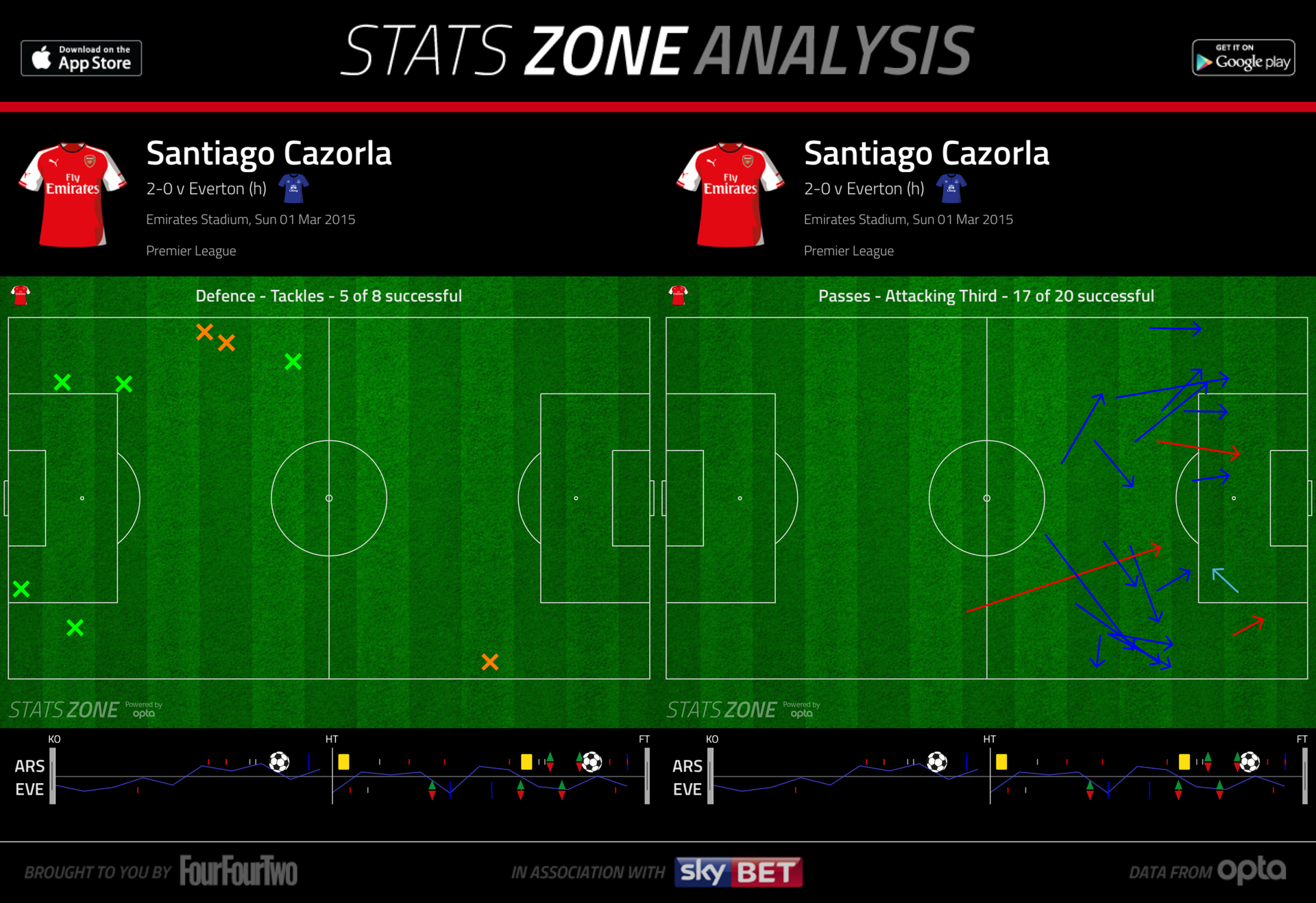
There’s a worry, though, that Cazorla feels slightly marginalised at Arsenal. He’s adapted well to his new position, and at the age of 30 might thrive there – deep-dwelling playmakers like Xavi, Andrea Pirlo and, more recently, Michael Carrick, often receive most acclaim when entering their fourth decade.
But Cazorla has effectively been shunted into different positions to make room for Mesut Ozil, another outstanding playmaker, but one who hasn’t performed at the same level as his Spanish team-mate during their Arsenal careers. It would only be natural if Cazorla felt overlooked.
The 30-year-old has been keen not to discuss his future in recent interviews, and with Atletico Madrid interested in taking him back to Spain, Arsenal will need to prove their commitment to keep him. Cazorla would be a significant loss, both for Arsenal and for the Premier League.
Arsenal vs Chelsea LIVE ANALYSIS with Stats Zone
